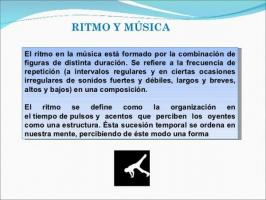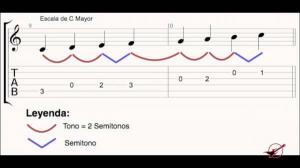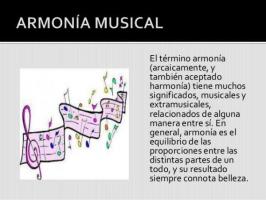Types of MELODIES and their characteristics

Image: Slideshare
Music is made up of many elements, each of which makes a special and important contribution to this type of art that differentiates between one work and another and that allows each person to identify with one or other.
Some people love to sing and others perhaps not so much, but what is true is that more than once we have met whistling or humming a song, going over in our head or out loud that music that we listen to and that we like or cannot to forget.
In this lesson from a TEACHER we will talk about one of these crucial elements in a musical work: types of melodies and their characteristics.
Before entering fully to discover the different types of melody and their characteristics, it is essential to understand the concept better. The word melody has its roots in Greek, made up of the words "Melos", which means music or tune, and "Aoid" which means song or song. The concept then is related to what can be sung in music.
Musical compositions are multidimensional works, in it we find elements that are measured not only by time but also by
tuning. On a staff we can see written notes and these have both a value of rhythm assigned as a height. Taking this into account, the melody is a succession of sounds (or notes on a staff), both in rhythm and in pitch, which is perceived as a unit. That is, a melody is a set of notes, not just one or a pair, but several that have a progression and amusical sense.For practical purposes, the melody in a song or play is what you can hum, sing or whistle. Generally the melody is the most important point of a work, especially in the songs (which are made for the voice) or in a single instrument (which is written for a single instrument to interpret and stand out from the rest of the instruments). The melody is often important to the success of a work because it is what the audience can remember most easily.
The melody is usually accompanied by a series of chords that support their harmony, and therefore have to be compatible and have the same sense of expression.
Let's go fully into the body of matter and discover the types of melody and their characteristics. The basic and technical classification of a melody depends on the direction of the progression of the notes, in its pitch or pitch. This is very easy to visualize when we see a written score, because we can follow the height of the notes as if it were a drawing. There will be notes that will go up and others that will go in the opposite direction, if we follow their directions we can identify what type of melody we are dealing with.
It is important to mention that we call a melody the main “voice” of a work, This does not mean that we cannot divide it into parts to analyze it. Within the same work or even the same fragment, we can identify different types of melodic combinations.
Ascending Melody
It is a melody that goes from low to high. In other words, the second note will be higher than the first, the third higher than the second, and so on.
Example to listen to: The trumpets in the first bars of "Thus Spoke Zarathustra" by Richard Strauss.
Descending Melody
It is the opposite of an ascending melody, in this type the notes become lower as the melody progresses.
Example to listen to: In the first sentence of the Christmas carol “Adornen los Salones” (Deck the Halls).
Linear Melody
It is when a note is kept at the same height and is repeated (and can vary in rhythmic value). In linear melody the note does not rise or fall in height, creating a monotonous or emphasis effect.
Example to listen to: The first bars of the melody of the “Funeral March” by Frederic Chopin.
Wavy Melody
They are the type of melodies that progressively vary in height, creating a pattern of swaying "waves". For the melody to be considered wavy, the distance in pitch between each note cannot be very large, and it is quite symmetrical. Many times it is produced by “joint degree " which is the next note in the scale or with no greater difference of 1 tone.
Example to listen to: The first bars of “La Mañana” (Peer Gynt) by Edward Grieg.
Broken Melody
It is when the melody "jumps" from one note to another and does so from bottom to top and vice versa, intermittently. Unlike a wavy melody, the distances of the broken melody are greater and for this reason we have this feeling of rupture of continuity.
Example to listen to: Operatic song in Mozart's “Aria de la Fluuta Mágica”. (1)
As in all art, the limit of creativity to create melodies is infinite, remember that even in the same melody we can have fragments and combinations of the types of melodies. After all, these possibilities are what make music such a fascinating and endless world.
If you liked reading this article by a teacher and you have discovered things about types of melodies and their characteristicsWe invite you to leave a comment and continue exploring the rest of the articles we have so that you continue learning.

Image: Slideshare



